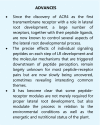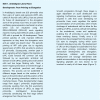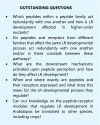Peptide-Receptor Signaling Controls Lateral Root Development
- PMID: 31862841
- PMCID: PMC7140930
- DOI: 10.1104/pp.19.01317
Peptide-Receptor Signaling Controls Lateral Root Development
Abstract
Lateral root development progresses through different steps with, the peptides and receptors involved in each of these steps triggering downstream mechanisms upon peptide perception.
Figures




References
-
- Brand U, Fletcher JC, Hobe M, Meyerowitz EM, Simon R (2000) Dependence of stem cell fate in Arabidopsis on a feedback loop regulated by CLV3 activity. Science 289: 617–619 - PubMed
Publication types
MeSH terms
Substances
LinkOut - more resources
Full Text Sources

